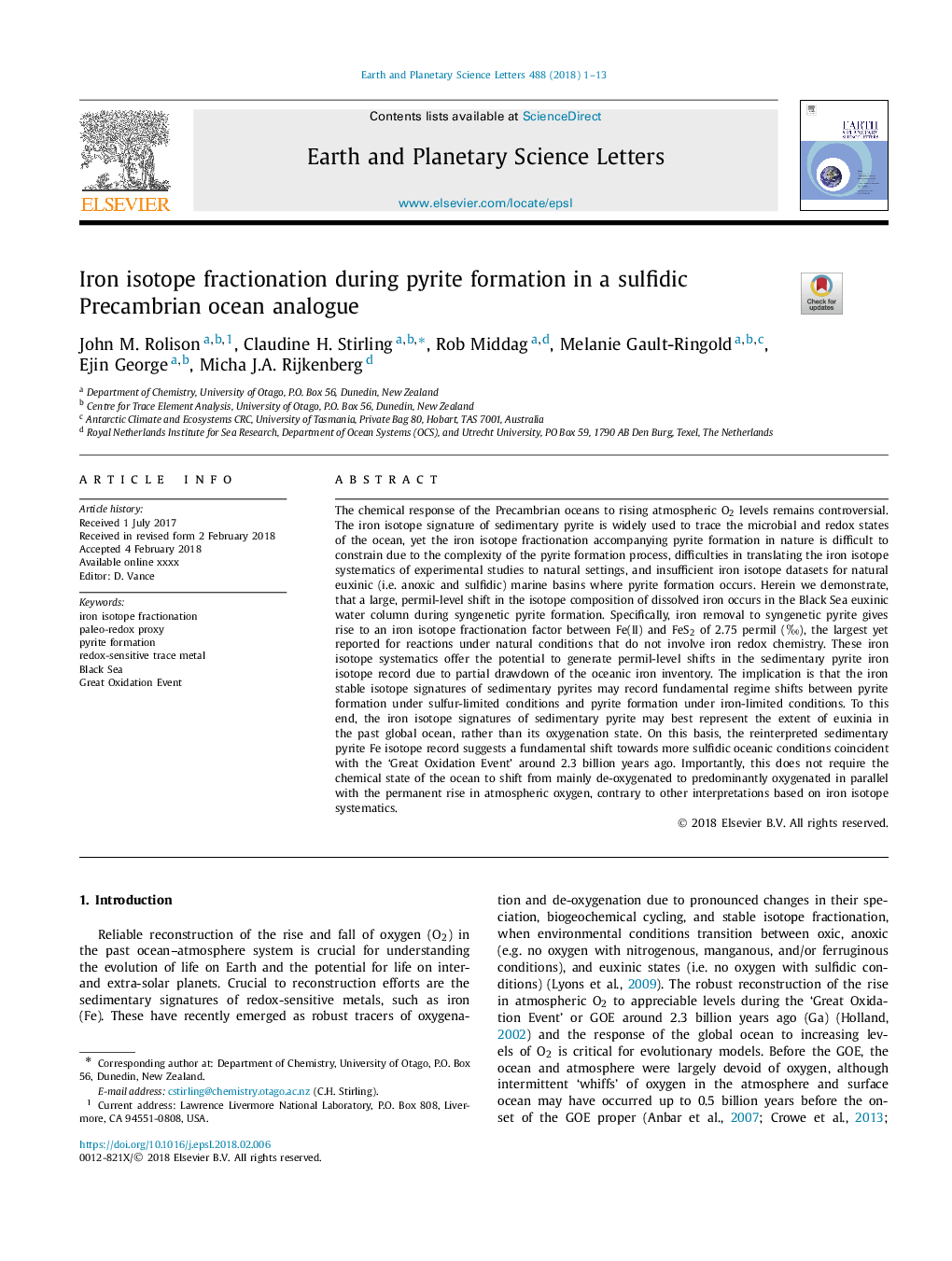| کد مقاله | کد نشریه | سال انتشار | مقاله انگلیسی | نسخه تمام متن |
|---|---|---|---|---|
| 8907035 | 1634668 | 2018 | 13 صفحه PDF | دانلود رایگان |
عنوان انگلیسی مقاله ISI
Iron isotope fractionation during pyrite formation in a sulfidic Precambrian ocean analogue
ترجمه فارسی عنوان
تجزیه ایزوتوپ آهن در طی تشکیل پریت در یک آنالوگ اقیانوس پکامبرین سولفیدی
دانلود مقاله + سفارش ترجمه
دانلود مقاله ISI انگلیسی
رایگان برای ایرانیان
کلمات کلیدی
تجزیه ایزوتوپ آهن، پروکسی پائولو ردکس، تشکیل پریت، ردیاب فلز حساس، دریای سیاه، رویداد اکسیداسیون بزرگ،
موضوعات مرتبط
مهندسی و علوم پایه
علوم زمین و سیارات
علوم زمین و سیاره ای (عمومی)
چکیده انگلیسی
The chemical response of the Precambrian oceans to rising atmospheric O2 levels remains controversial. The iron isotope signature of sedimentary pyrite is widely used to trace the microbial and redox states of the ocean, yet the iron isotope fractionation accompanying pyrite formation in nature is difficult to constrain due to the complexity of the pyrite formation process, difficulties in translating the iron isotope systematics of experimental studies to natural settings, and insufficient iron isotope datasets for natural euxinic (i.e. anoxic and sulfidic) marine basins where pyrite formation occurs. Herein we demonstrate, that a large, permil-level shift in the isotope composition of dissolved iron occurs in the Black Sea euxinic water column during syngenetic pyrite formation. Specifically, iron removal to syngenetic pyrite gives rise to an iron isotope fractionation factor between Fe(II) and FeS2 of 2.75 permil (â°), the largest yet reported for reactions under natural conditions that do not involve iron redox chemistry. These iron isotope systematics offer the potential to generate permil-level shifts in the sedimentary pyrite iron isotope record due to partial drawdown of the oceanic iron inventory. The implication is that the iron stable isotope signatures of sedimentary pyrites may record fundamental regime shifts between pyrite formation under sulfur-limited conditions and pyrite formation under iron-limited conditions. To this end, the iron isotope signatures of sedimentary pyrite may best represent the extent of euxinia in the past global ocean, rather than its oxygenation state. On this basis, the reinterpreted sedimentary pyrite Fe isotope record suggests a fundamental shift towards more sulfidic oceanic conditions coincident with the 'Great Oxidation Event' around 2.3 billion years ago. Importantly, this does not require the chemical state of the ocean to shift from mainly de-oxygenated to predominantly oxygenated in parallel with the permanent rise in atmospheric oxygen, contrary to other interpretations based on iron isotope systematics.
ناشر
Database: Elsevier - ScienceDirect (ساینس دایرکت)
Journal: Earth and Planetary Science Letters - Volume 488, 15 April 2018, Pages 1-13
Journal: Earth and Planetary Science Letters - Volume 488, 15 April 2018, Pages 1-13
نویسندگان
John M. Rolison, Claudine H. Stirling, Rob Middag, Melanie Gault-Ringold, Ejin George, Micha J.A. Rijkenberg,
